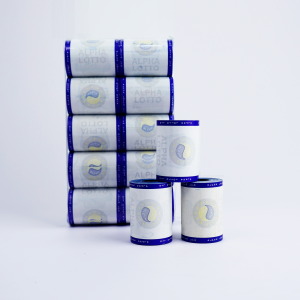 Thermal paper is widely used in various industries such as retail, restaurants, banking and healthcare due to its ability to produce high-quality prints through thermal imaging. However, proper storage of thermal paper is critical to maintaining its quality and longevity. Next, let’s take a look at the various ways to store thermal paper effectively.
Thermal paper is widely used in various industries such as retail, restaurants, banking and healthcare due to its ability to produce high-quality prints through thermal imaging. However, proper storage of thermal paper is critical to maintaining its quality and longevity. Next, let’s take a look at the various ways to store thermal paper effectively.
Avoid direct sunlight: Exposure to sunlight can cause thermal paper to fade and reduce print quality. Therefore, thermal paper must be stored in a cool, dry place away from direct sunlight. This will help protect the paper’s chemical coating and prevent premature aging.
Maintain optimal temperature and humidity: Thermal paper should be stored in an environment with moderate temperature and humidity. High temperatures can cause paper to turn black, while high humidity can cause paper to absorb moisture and curl. Ideally, the temperature should be between 50°F and 77°F (10°C and 25°C), and the humidity should be about 45% to 60%.
Store in a dust-free environment: Dust particles can damage the sensitive thermal coating on the paper, resulting in poor print quality. To avoid this, store thermal paper in a clean and dust-free environment. Consider using lidded storage containers or sealing the paper in a plastic bag for extra protection from dust.
Avoid contact with chemicals: Thermal paper is chemically treated and will react with heat, and contact with other chemicals will change its composition and reduce its quality. Store thermal paper away from substances such as solvents, acids, and alkalis to prevent chemical reactions that could degrade the paper.
Handle and stack thermal paper correctly: When storing thermal paper, avoid bending, folding, or creasing it, which may cause permanent damage. It’s best to keep the paper flat or slightly rolled to maintain its integrity. Also, do not place heavy objects on the paper to avoid crushing or deforming it.
Rotate inventory and use the oldest rolls first: To prevent thermal paper from deteriorating or fading, implement a “first in, first out” inventory system. This means using the old thermal paper roll first and then using the new thermal paper roll. By rotating your inventory, you ensure that paper is used within a reasonable amount of time, thereby reducing the likelihood that paper will become unusable due to long-term storage.
Monitor and replace damaged rolls: Regularly inspect stored thermal paper for any signs of damage, such as discoloration, stains, or adhesive residue. If you come across a damaged roll, be sure to replace it immediately, as using damaged paper can lead to poor print quality and machine failure.
By following these best practices, you can ensure your thermal paper remains in optimal condition for a longer period of time, guaranteeing high-quality prints and minimizing potential printing issues. Remember to store thermal paper in a cool, dry place away from sunlight, maintain optimal temperature and humidity levels, protect it from dust and chemicals, and handle and rotate inventory appropriately. By taking these steps, you can preserve the life and print quality of your thermal paper roll.
Post time: Nov-13-2023


